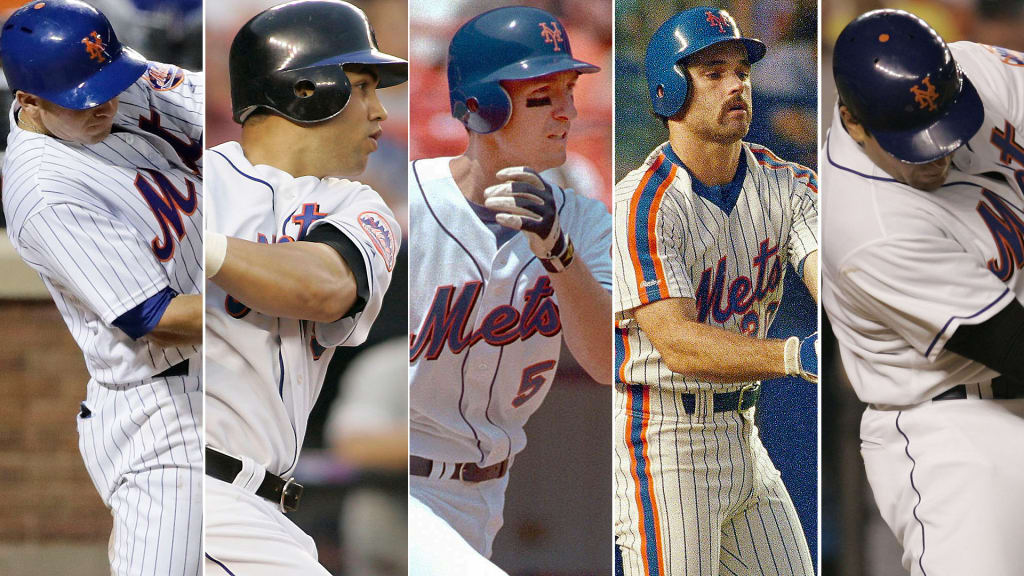
NEW YORK -- Over their nearly six-decade history, the Mets have come to be known more for their pitching prowess than their position players. They¡¯ve had seven National League Cy Young Award winners, but never an MVP. And yet plenty of talented hitters have passed through Flushing, submitting some of the finest individual seasons the league has seen.
Here¡¯s a look at the five best seasons by a position player in Queens.
1. David Wright, 2007
Key stats: .325/.416/.546, 30 HR, 107 RBI, 34 SB, 8.3 bWAR, 8.4 fWAR
In terms of both Baseball-Reference and FanGraphs¡¯ versions of WAR, Wright¡¯s 2007 season was the best in Mets history. At 24, Wright became the first player in 16 years to compile a 30-30 season, cracking his 30th homer on Sept. 16. He attempted only 39 steals on the season, finishing with an 87 percent success rate. The 2007 Mets became infamous for one of the biggest collapses in Major League history, as they blew a seven-game division lead with 17 to play. But it wasn¡¯t because of Wright, who hit .397 with 11 RBIs and a 1.027 OPS in those 17 games. In addition to finishing fourth in NL MVP voting in 2007, Wright won the first of his two career Gold Gloves, proving as adept at third base as he was in the batter¡¯s box. And he did it nearly every day, matching his career high -- achieved three times -- with 160 games played.
2. Carlos Beltrán, 2006
Key stats: .275/.388/.594, 41 HR, 116 RBI, 18 SB, 8.2 bWAR, 7.8 fWAR
Throughout Beltr¨¢n¡¯s tenure in Flushing, many fans and pundits disparaged the franchise-record seven-year, $119 million contract Beltran signed before the 2005 season. And yet it was statistically one the most fruitful long-term deals in MLB history, in large part because of what Beltr¨¢n accomplished in 2006. At 29, Beltr¨¢n showcased all five of his tools, hitting for average and power while winning a Gold Glove in center field and proving a menace on the basepaths. He added three home runs, five RBIs and two stolen bases in the postseason, though he¡¯s unfairly remembered best for the called third strike he took to end the NL Championship Series. In reality, the only thing holding Beltr¨¢n back from leading this list is the fact that leg injuries limited him to 140 games.
3. John Olerud, 1998
Key stats: .354/.447/.551, .430 wOBA, 167 wRC+, 7.6 WAR, 8.1 fWAR
No qualified Mets hitter has produced a higher batting average or on-base percentage than Olerud did in 1998. His performance is often forgotten because the Mets missed the playoffs, because he didn¡¯t lead the league in any major statistical category and because he didn¡¯t set career highs in anything. (Olerud hit a rather absurd .363/.473/.599 with the Blue Jays in 1993.) He finished just 12th in MVP voting. Nonetheless, his impact is even clearer in retrospect. To this day, Olerud leads the Mets in career batting average, on-base percentage and OPS, in large part because of what he accomplished in 1998.
4. Howard Johnson, 1989
Key stats: .287/.369/.559, 36 HR, 41 2B, 101 RBI, 41 SB, 6.9 bWAR, 7.0 fWAR
Johnson¡¯s 1989 campaign was arguably the finest single-season offensive performance in Mets history. In terms of both adjusted OPS+ and offensive WAR, it tops the list. Prefer counting stats? Johnson had those as well, finishing with the second of his three 30-30 seasons. (Wright and Darryl Strawberry were the only other Mets to go 30-30, and they both did so once.) Perhaps a measure of good fortune was involved here, as Johnson finished with a .308 BABIP -- the highest of his career, and 39 points loftier than his career mark. That resulted in a career-best .287 batting average that included plenty of extra-base pop. Johnson¡¯s third-base defense pulled down his WAR totals just a bit, but he still ranks in the Top 10 on both the Baseball-Reference and FanGraphs lists. He finished fifth in NL MVP voting, and probably would have done better with a more modern electorate making the call.
5. Mike Piazza, 2000
Key stats: .324/.398/.614, 38 HR, 113 RBI, 155 OPS+, 5.1 bWAR, 5.8 fWAR
Piazza accomplished things as a catcher that no one has repeated before or since. Case in point: His .614 slugging percentage in 2000 was a Mets record that still stands (though his 1.012 OPS fell just short of the franchise-record 1.024 mark he posted in a partial season in 1998). The 2000 season saw the 10th of Piazza¡¯s 12 consecutive All-Star appearances. He finished third in MVP voting for the third-highest finish of his career. Because he was a catcher, Piazza appeared in only 136 games, which -- along with his relatively pedestrian defensive showing -- prevented him from moving higher up this list. But he capped the year with a memorable postseason performance, with four home runs, eight RBIs and a .302/.403/.642 slash line in 14 October games.
Honorable mention: The most unexpected career year in franchise history likely belonged to Bernard Gilkey, who exploded for a .317/.393/.562 slash line with 30 homers and 117 RBIs after coming to the Mets via trade in 1996. Gilkey never came close to matching those numbers in any season before or since. ¡ Lance Johnson also made his first year in Flushing count, hitting .333 with a league-leading 21 triples and a career-high 50 stolen bases in 1996. ¡ Factoring in defense, Gary Carter's 1985 season was at least as impactful as Piazza¡¯s 1998 campaign. He just didn¡¯t offer quite the same punch at the plate. ¡ The closest the Mets ever came to an MVP was Darryl Strawberry in 1988, though he might have had an even better argument in 1987.

